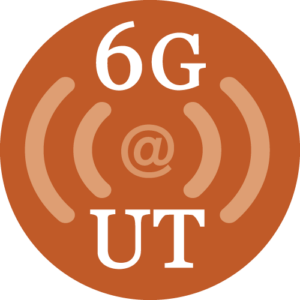February 2023: Many reports from Ukraine support the fact that efforts by the country have been significantly aided by their use of Starlink’s services. Whether it is in civilian use, or military use, Starlink terminals and services are widely used. A specific area of interest is in drones, where reports from Ukraine claim “the country’s military was looking to establish strike forces that would be provided with Starlink equipment to create fleets of interoperable drones” according to C4ISRNET. According to experts like David T. Burbach, professor of national security affairs at the U.S. Naval War College in Newport, Rhode Island, “[there is] no question that Starlink’s prominence in the Ukraine war has militaries all over the world considering and looking to make greater use of it as well as similar mobile data constellations.” With some unconfirmed reports from pro-Russian paramilitary groups claiming to have found Starlink dishes modified to fit in Ukrainian drones, the question of using signals emitted by potential Starlink-enabled drones or base stations to intercept them arises. The RNL’s Dr. Humphreys asserts that the user terminal beams “are narrow (less than 5 degrees and they hop around in frequency, which make it hard to get an actual lock on a terminal.” The impact of Starlink’s use in current Ukrainian efforts are bound to shape potential future military uses of Starlink, regardless of comments by Starlink and Elon Musk regarding a ban of use of Starlink for long-range drone strikes by Ukrainian forces. Story here.
Starlink’s effect on the War in Ukaraine
January 2023: Starlink has ” became a transformative tool for modern warfare” as is evident in the current war in Ukraine where is it used in a variety of manners to aid in communication, intelligence and even military strategy support through algorithms made available to commanders. “Tens of thousands of Ukrainian citizens” are also relying on the service, many of which are soldiers on the front lines. According to the RNL’s Dr. Humphreys, military insiders “are in awe of Starlink,” since it provides more resilience than some military specific communications systems, specifically in jamming. For more on the story, visit The Times.

RNL Member Hailey Nichols awarded an “Austin Inno Under 25”
December 2022: According to Austin Business Journal, “Inno Under 25 is a recognition of the top founders, entrepreneurs, innovators and leaders under 25 in your local ecosystem. To highlight some of our youngest entrepreneurs and innovators, Inno compiles a list each year of promising and accomplished future leaders in the city’s startup scene.” RNL alumna Hailey Nichols was awarded an “2023 Inno under 25,” as a rising startup leader in Austin. Congratulations Hailey!
GPS receiver on ISS to geolocate GPS jamming and spoofing signals
December 2022: The Radionavigation Laboratory in April of 2022 “for the first time in the wild, [we] had a recording of a full-blown spoofing signal,” as a result of an experimental receiver deployed on the ISS “trained on a location in the eastern Mediterranean. […] Currently, Spire Global and HawkEye360 are using the proof in developing platforms capable of detecting and geolocating terrestrial GPS interference. Other organizations have shown interest as well.” Using a constellation, like that of Spire with over 100 in orbit, would leave “no place to hide” according to the RNL’s Dr. Humphreys. The full story is covered here by Kratos Defense.
Starlink as a backup to GPS
November 2022: As Starlink’s use in the Ukraine military efforts is becoming more and more known, the question of how many other ways Starlink could be used is raised. As Politico claims, “It’s no secret that Ukraine’s military relies heavily on the SpaceX service for a number of critical functions in its fight against Russian troops, including voice and electronic communications, helping fly drones and even correcting artillery fire.” The RNL’s Dr. Todd Humphreys has indicated that the Defense Department leaders have an “increased interest” in the “additional value” Starlink could offer compared to their current costly GPS phased-array antenna setup that aims to reduce its susceptibility to jamming. The idea has even gotten attention from Elon Musk himself who tweeted out that Starlink could “obviously offer far more robust positioning than GPS, as it will have ~1000X more satellites over time,” in response to the under-review paper written by Dr. Humphreys. Story here.

Starlink signal structure and Synchronization Sequences revealed
October 2022: The Radionavigation Laboratory has released a paper revealing the Starlink signal structure and synchronization sequences. For an article about the paper’s release you can navigate to the MIT Technology Review. Other news organizations have also written articles about the paper, such as here and here. For access to the paper, you can either look it up in our Publications page, or on arxiv.

Ericsson and UT Austin extend research partnership
October 2022: “XR technology is expected to drive a paradigm shift for how users interact between the cyber and physical worlds as the first large-scale 6G deployments occur around 2030, becoming a major facilitator of both completely virtual metaverses and the embedment of a virtual layer within the physical sphere.
The research project is headed by a cross-discipline team of three world-leading UT Austin professors in collaboration with Ericsson’s own researchers in the area. The research focuses on the challenge of ensuring bounded latency while simultaneously maximizing spectral efficiency and capacity both indoors and outdoors as well as achieving perceptually optimized streaming to XR devices.
Magnus Frodigh, Head of Research, Ericsson, says: ‘This is a big investment from Ericsson in what we believe will be a future paradigm shift, with innovators we believe can help us lead this change. We are always eager to collaborate with the very best researchers. Jeff Andrews, Alan Bovik and Todd Humphreys are world-leading professors in their areas, and we consider the UT team to be at the forefront, perfectly positioned to place focus on the most relevant research.'” For more details, visit Ericsson’s website.

Starlink unlikely to help the current situation in Iran
September 2022: Another situation arises where a large population of people have restricted or cut off internet access. Earlier this year, when Ukrainians were in dire need of internet access, Elon Musk’s Starlink stepped in and impactfully improved the situation. It seems unlikely the same can be said about the current situation in Iran. Regardless of Musk’s public announcement of “Activating Starlink …” over Iran, many are skeptical that Starlink will make an impact, at least in the short run. The RNL’s Dr. Todd Humphreys is quoted saying that Starlink is not a practical solution here due to the lack of Starlink user terminals in the country, and the unlikeliness of someone creating a DIY user terminal due to the complexity and structure of the signal. Beyond just that, there are many regulatory hurdles as well as the fact that the user terminals transmit back the the satellites, and this any users could be located by the Iranian government. Additionally, the lack of ground stations within Iran itself would introduce a reduced speed. The full story is covered here by The Intercept.

RNL Member Hailey Nichols selected by Aviation Week as one of their 20 Twenties of 2022
July 2022: “Aviation Week Network honors 20 students in their Twenties each year currently enrolled in a bachelor’s or master’s degree program in Science, Technology, Engineering or Math (STEM). The 20 Twenties program was established by Aviation Week Network in 2013 to recognize talented individuals who are on course to change the face of the aerospace and defense industry. Criteria is based on academic performance, public/community involvement and how they communicate the value of your individual research/design project.” Congratulations Hailey!
For more details visit this article.


Starlink’s help in Ukraine during wartime
June 2022: Starlink’s terminals have been playing an active role in keeping Ukraine’s communication networks running. They are used to “coordinate artillery fire and operate drones” in addition to providing the people, and even the Ukrainian President himself, internet access from remote and cut-off areas in the country. According to the Ukrainian government, there are reports of up to 10 Km of cables used for communication having been destroyed in specific areas. With over 14,000 Starlink terminals, Ukraine has managed to keep its communication network running. According to the RNL’s Dr. Humphreys, Russia has “demonstrated a keen interest in disrupting communication lines” as is clear from their initial cyber attacks on ViaSat terminals in Ukraine and other parts of Europe. Dr. Humphreys further stated that the apparent capability of Russia locating active Starlink terminals is much below what was anticipated. Having an active communication network for civilians has also proven vital since the people in Ukraine can get critical information promptly and counteract Russian propaganda about their actions in Ukraine. The full story is covered here by Voice of America.



